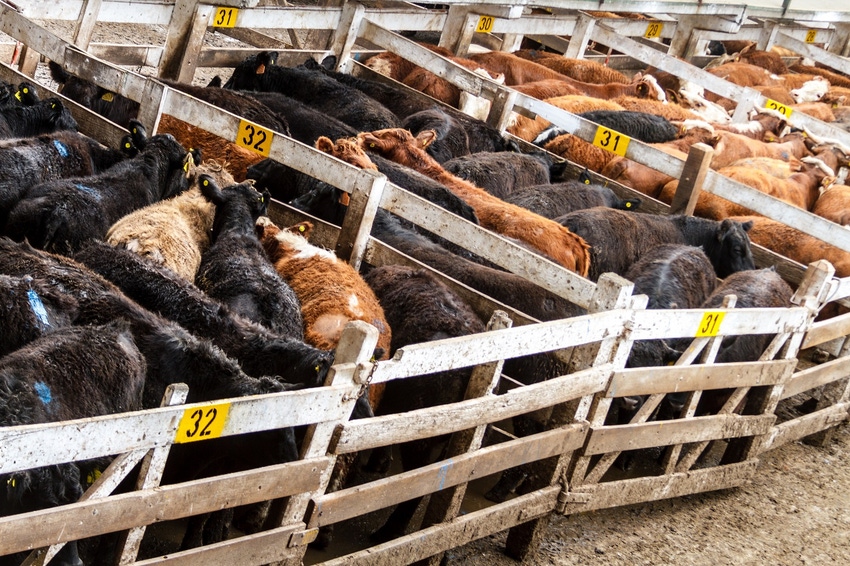
When it came to buying and selling cattle, the late Gordon Hazard and I seldom had any significant differences in opinion.
We agreed that we planned and worked to purchase animals that had profit built in them. Neither of us were interested in keeping cattle that are just “standing around,” and I'm still not. We agreed we wanted to see improvement and gain.
Further, let me add that purchase price is very important. Someone once said "cattle bought right are at least half sold."
However, decisions made on what to buy and how much can be paid are not easy. This is especially true when the market is falling as it did recently. Because of market fluctuations and fear, there are a lot of intelligent people who opt out of ownership and graze take-in cattle for other folks. I like owning the cattle. If there is any money made, I’ll get it all.
Recently it has been brought to my attention that purebred, registered cattle are selling at prices that are hard for me to figure or at least give any serious consideration. Remember the registered cattle and bull prices tend to hold up after the commodity prices fade. The commodity market is not fed with as much hype. In the past, I have made the statement that purchased cattle need to be capable of improvement. They need to be going to a better home. Pretty cattle don’t have much attraction to a lot of us. I’m interested in selling pretty cattle, not buying them.
Remember that if we have grass, we need cattle to turn it into money. Another question is how much can we pay for females and what do we need to buy? Some considerations concerning values in a cow herd are worth listing:
Heifer calves
Heiferettes
Bred young cows
Bred middle-aged cows
Pairs (with a steer calf or heifer at their side)
Older cows
Quarantining and breaking of new animals
Location and freight and commissions
Market trends and expectation
Our individual capabilities and expertise
Profitability
I cannot remember seeing a formula for cow pricing but the first thing I’m needing to look at is the cull cow market, since that is where most everything is eventually headed. Recently, good breaker cows were bringing around $1.05 per pound in the meat. This means they are worth what beef is hanging on the rail and are bringing $1.05 per pound in mid-June, 2019. A moderate dressing 1,000-pound fat cow was bringing around 46 cents per pound at 10 a.m., live weight. My guy stops receiving at his buying station at 12 noon due to shrink. There is a lot of variation in cull cows and I am not planning to top that market. My cull cows are not what the market is crazy about. So I am going to get discounted. But remember I’m using the market to figure buying not selling.
Truth is that I am starting at the end and planning backward to the beginning. In my case I am interested in 850- to 950-pound cows that gain and lose maybe 200 pounds every year. The open cows (culls) might likely weigh 1,000 pounds in early July and if they are going to slaughter, would bring $500 or considerably less back to headquarters.
I am in the yearling and grass-finished cattle business, so 800-pound yearlings are worth maybe $1.30 average in August or $1,000. I’ve been selling grass finished cattle for $1.40. A fat 900-pound heifer will bring $1,260 and is likely my most profitable animal, if I can get her sold. However, I don’t live off the "if," so I’ll figure her at $900. Truth is that buying formulas for a cow herd is a tough figure to derive. My advice is to keep away from breeding "terminal" cattle. If you are in the cow business then consider the economics of retaining calves to yearlings. Allow your forage to dictate your decisions. This is not real difficult if you follow the natural model rules. Here are some of those:
Run one herd.
Graze at high densities.
Don’t own equipment. (Just need a small, used pickup truck, poly braid, and energizers.)
Eliminate hay.
Supplement wisely and start early.
Monitor daily, respond to what you see and move the cattle.
Sell excess production in a planned manner in the middle of the growing season.
Do not winter big cattle that are not highly profitable.
I would presently have a tough time justifying paying more than $800 to $1,000 for cows and likely could not get many bought that would fit our program. I do not know where the bottom is since it is a moving target. But I don’t like the chances of giving more than 250% of what my cull buyer is paying when it comes to cows. Heifers that we abort at 12-14 months and run with the herd are very inexpensive, and a good percentage fit our program. They are developing into cows that work and are profitable.
I have failed to come up with a cow buying formula. I’ve noticed that most good cow men and women have two things in common. They don’t buy cows and they are not in the registered business.
About the Author(s)
You May Also Like






